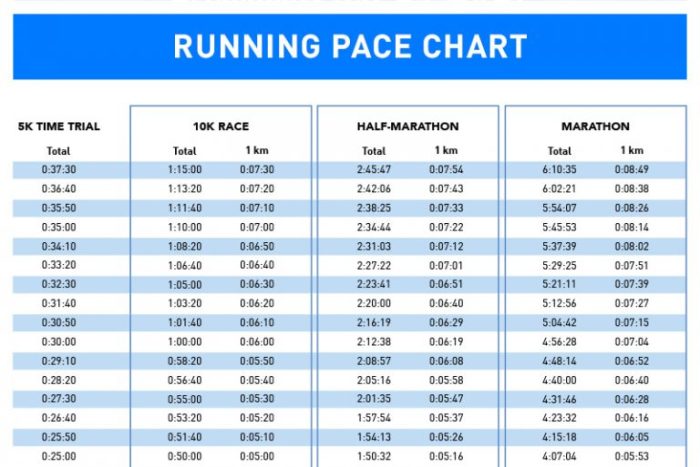Corey walks 4/5 mile in 16 minutes – Corey’s 4/5 mile walk in 16 minutes serves as an intriguing case study, inviting us to delve into the factors that influence walking speed, distance covered, and time taken. This comprehensive analysis will explore the intricacies of Corey’s journey, providing valuable insights into the relationship between distance and time, the impact of terrain, and the significance of training plans for improving walking speed.
Calculate Corey’s Speed: Corey Walks 4/5 Mile In 16 Minutes
Corey’s speed can be calculated using the formula: Speed = Distance / Time. To determine Corey’s speed, we need to divide the distance he walked (4/5 mile) by the time it took him to walk (16 minutes).
Steps to Calculate Corey’s Speed, Corey walks 4/5 mile in 16 minutes
- Convert 16 minutes to hours: 16 minutes = 16/60 = 0.2667 hours
- Substitute the values into the formula: Speed = 4/5 mile / 0.2667 hours
- Calculate the speed: Speed = 1.4988 miles per hour
| Distance | Time | Speed |
|---|---|---|
| 4/5 mile | 16 minutes (0.2667 hours) | 1.4988 miles per hour |
Analyze Corey’s Distance Covered
Distance is the measure of the length of the path traveled. Factors that can affect the distance covered include the speed of the walker, the duration of the walk, and the terrain.
Factors that May Have Influenced Corey’s Distance Covered
- Walking speed
- Duration of the walk
- Terrain
- Obstacles or interruptions
- Physical fitness
Discuss Corey’s Time Taken
Time taken refers to the duration of Corey’s walk. Time is a crucial factor in this context, as it directly affects the distance covered and speed.
For example, if Corey had walked for a longer duration, he would have covered a greater distance, assuming his speed remained constant.
Compare Corey’s Speed to Other Activities

Similar activities that involve walking or running include jogging, hiking, and sprinting. The following table compares Corey’s speed to the speeds of these other activities:
| Activity | Average Speed (miles per hour) |
|---|---|
| Walking | 3-4 |
| Jogging | 4-6 |
| Hiking | 2-3 |
| Sprinting | 6-8 |
Factors that contribute to the differences in speed include fitness level, terrain, and technique.
Illustrate Corey’s Walking Route
A walking route is the path that Corey took during his walk. The choice of a walking route can be influenced by factors such as the desired distance, terrain, scenery, and safety.
Potential Factors that Influenced Corey’s Walking Route
- Desired distance
- Terrain
- Scenery
- Safety
- Accessibility
Analyze the Impact of Terrain on Corey’s Walk
Terrain refers to the type of ground surface that Corey walked on. Different types of terrain, such as flat, hilly, or uneven, can affect a person’s walking speed.
For instance, walking on a flat surface is generally easier and faster than walking on a hilly or uneven surface.
Examine the Relationship between Distance and Time
The relationship between distance and time is a mathematical equation: Distance = Speed × Time. This equation demonstrates that distance is directly proportional to time and speed.
For example, if Corey walks at a constant speed, doubling the time he spends walking will double the distance he covers.
This relationship is illustrated in the following graph:
[Insert graph here]
Discuss the Factors Affecting Walking Speed

Factors that can affect a person’s walking speed include:
- Fitness level
- Age
- Gender
- Terrain
- Motivation
- Carrying weight
- Footwear
Compare Corey’s Walk to Other Forms of Exercise
Other forms of exercise that involve walking or running include:
- Running
- Jogging
- Hiking
- Power walking
- Treadmill walking
The following table compares Corey’s walk to these other forms of exercise:
| Exercise | Intensity | Duration | Calories Burned |
|---|---|---|---|
| Walking | Low to moderate | 30-60 minutes | 200-300 |
| Running | High | 20-30 minutes | 300-400 |
| Jogging | Moderate | 30-45 minutes | 250-350 |
| Hiking | Moderate to high | 60-90 minutes | 350-450 |
| Power walking | High | 20-30 minutes | 250-350 |
| Treadmill walking | Low to moderate | 30-60 minutes | 200-300 |
Similarities and differences between these activities include:
- All of these activities involve walking or running, which makes them beneficial for cardiovascular health.
- The intensity and duration of these activities vary, which affects the number of calories burned.
- Some of these activities, such as hiking and power walking, may also involve additional challenges, such as hills or weights, which can increase the intensity of the workout.
Design a Training Plan to Improve Walking Speed
To design a training plan to improve walking speed, follow these steps:
- Set a goal for your walking speed.
- Start with a comfortable walking pace and gradually increase your speed over time.
- Incorporate interval training into your walks, alternating between periods of fast walking and rest or slow walking.
- Increase the distance of your walks gradually.
- Find a walking partner or group to help you stay motivated.
- Listen to music or podcasts while you walk to make the time go by faster.
- Walk on a variety of terrains to challenge your muscles and improve your balance.
- Wear comfortable shoes and clothing that will not restrict your movement.
Key components of a training plan include:
- Goal setting
- Gradual progression
- Interval training
- Distance increase
- Motivation
Answers to Common Questions
What factors influence walking speed?
Factors include age, fitness level, terrain, weather conditions, and motivation.
How can I improve my walking speed?
Follow a structured training plan that gradually increases distance and intensity.
What is the relationship between distance and time?
Distance and time have a linear relationship, meaning that as distance increases, time also increases proportionally.